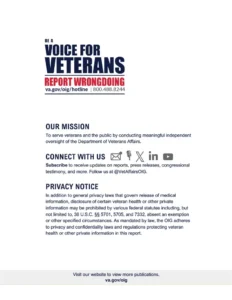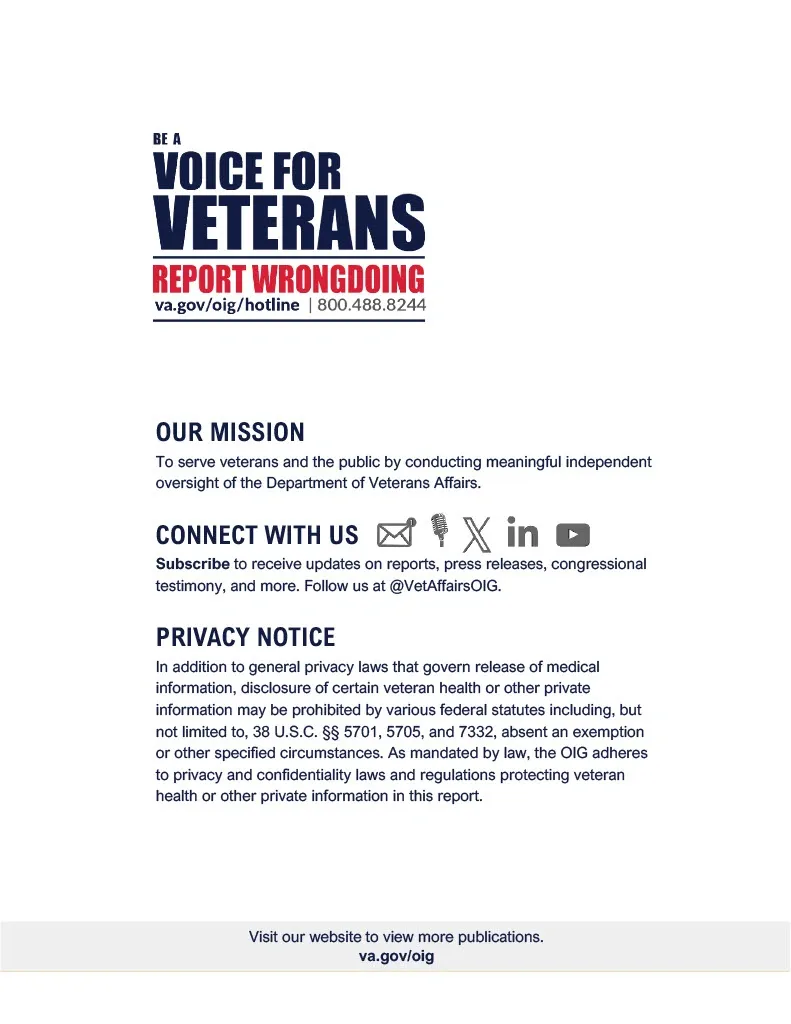Originally Posted: October 22, 2023
 For many veterans, obtaining their military service records is a vital step in accessing the benefits they rightfully deserve. However, for some, this process has been complicated due to a tragic event that occurred in July 1973 when a fire damaged or destroyed up to 18 million Army and Air Force official military personnel files at the National Archives and Records Administration’s (NARA) National Personnel Records Center (NPRC) in St. Louis, Missouri. This disaster has made it especially challenging for veterans who served in the Army or Air Force prior to 1960 or 1964, respectively, to acquire the necessary records when filing claims for benefits. In this blog post, we’ll explore the efforts of the Veterans Benefits Administration (VBA) in assisting veterans with obtaining or reconstructing damaged or destroyed records, as revealed in a recent audit report.
For many veterans, obtaining their military service records is a vital step in accessing the benefits they rightfully deserve. However, for some, this process has been complicated due to a tragic event that occurred in July 1973 when a fire damaged or destroyed up to 18 million Army and Air Force official military personnel files at the National Archives and Records Administration’s (NARA) National Personnel Records Center (NPRC) in St. Louis, Missouri. This disaster has made it especially challenging for veterans who served in the Army or Air Force prior to 1960 or 1964, respectively, to acquire the necessary records when filing claims for benefits. In this blog post, we’ll explore the efforts of the Veterans Benefits Administration (VBA) in assisting veterans with obtaining or reconstructing damaged or destroyed records, as revealed in a recent audit report.
The Audit Report:
The Office of Audits and Evaluations recently conducted an audit (Report Number: 22-03522-209) to assess how well VBA personnel were assisting veterans in obtaining records that were lost in the fire. Here are some key findings from the report:
- The Extent of the Fire Damage:
In July 1973, a catastrophic fire damaged or destroyed a significant number of Army and Air Force official military personnel files at the NPRC. This tragic event had far-reaching consequences, making it difficult for veterans to access their records when needed for benefit claims. - The Purpose of the Audit:
The National Defense Authorization Act (NDAA) of 2023 mandated the VA Office of Inspector General (OIG) to investigate the extent to which VBA personnel were following the Adjudication Procedures Manual when helping veterans obtain or reconstruct damaged or destroyed records. - Audit Findings:
The OIG’s audit uncovered several important findings:- VBA staff did not always follow procedures in a timely manner.
- Procedures were not consistently followed in the order outlined in the Adjudication Procedures Manual.
- Required follow-up procedures were not consistently completed.
- Recommendations for Improvement:
In light of these findings, the OIG made three key recommendations:- Establish a process to identify and track veterans’ records that have been determined to be fire damaged or destroyed.
- Provide training to VBA staff on the process for requesting service treatment and military service records for fire-related records.
- Offer more specific guidance on the information required for the NPRC to locate veterans’ records.
Conclusion:
The audit report sheds light on the challenges veterans have faced in obtaining records lost in the 1973 fire at the NPRC. While VBA plays a crucial role in assisting veterans with these records, there is room for improvement in following established procedures and providing the necessary support.
As veterans continue to seek the benefits they rightfully deserve, it is essential that the VA takes these audit findings seriously and works towards implementing the recommended improvements. By doing so, we can ensure that those who have served our country receive the assistance and support they need in a timely and efficient manner.

